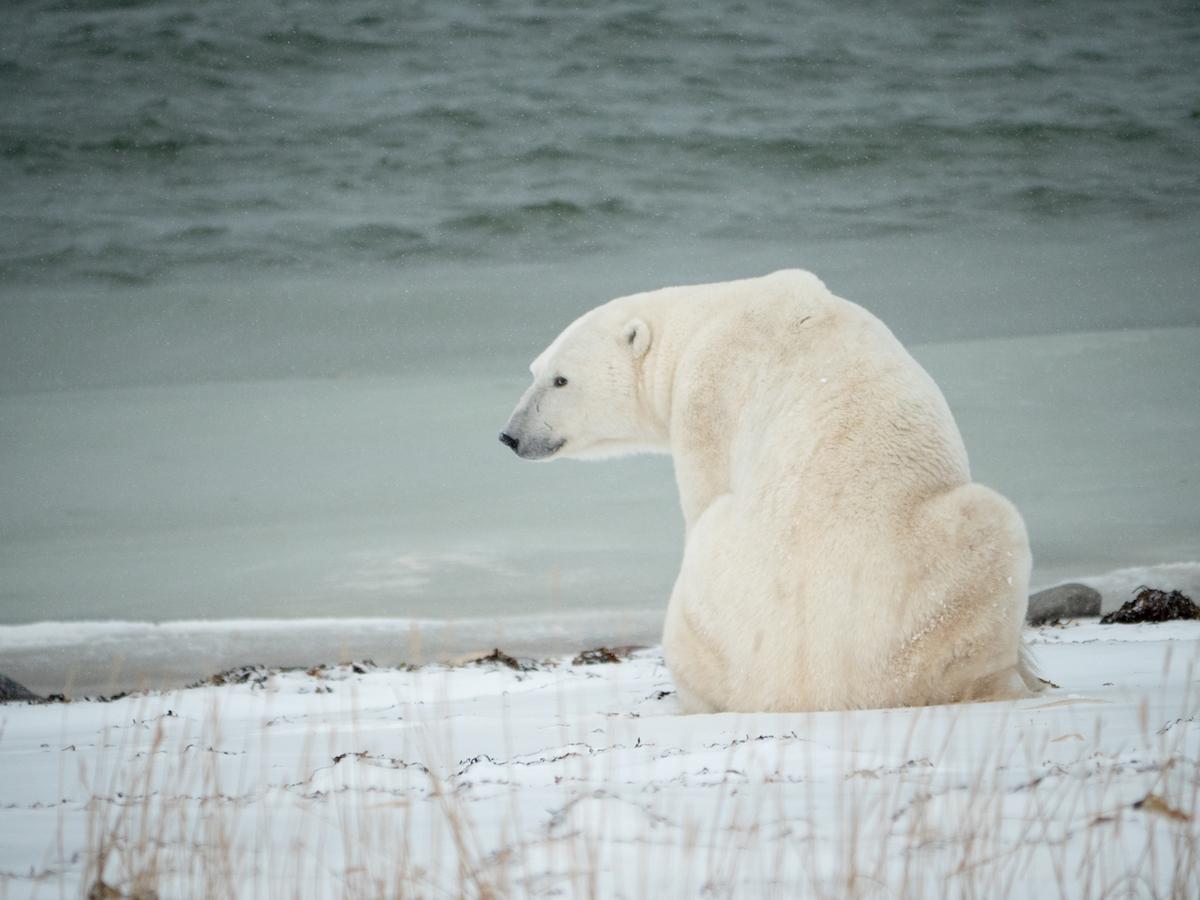
A polar bear waits on shore for the ice to freeze on Hudson Bay/Kt Miller, Polar Bears International
In northern Manitoba, the normally solitary polar bears that roam the tundra near the remote town of Churchill are starting to gather on the shore of Hudson Bay, waiting for the sea ice to freeze so they can hunt seals and fatten up.
This annual migration offers a view of the front line of climate change, as the greatest threat to polar bears is sea ice loss due to human-caused climate warming. Hudson Bay is melting earlier in summer and freezing later in the fall, with the summer ice-free period three to four weeks longer than it was in the 1980s.
People around the globe can watch the bears on live-streaming cameras during the 10th annual Polar Bear Week, which runs Oct. 30 to Nov. 5 and features a live chat series. Two cams will live-stream from Wapusk National Park, which is known for its polar bear dens. Two cams are mounted at Tundra Buggy Lodge at Polar Bear Point in the Churchill Wildlife Management Area, and one cam is mounted on a mobile Tundra Buggy (a giant, all-terrain vehicle that lets people safely travel to see bears).
Yukon-based Alysa McCall, Polar Bears International staff scientist and director of conservation outreach, is stationed in Churchill for the week living and working on a Tundra Buggy provided by Frontiers North Adventures.
“As the sea ice is declining in areas around the world, polar bears are spending more time on land like they are here in western Hudson Bay,” McCall said in a Zoom interview. “When polar bears spend more time on land, they get hungrier and are more likely to go searching for food where they shouldn’t — and that includes communities.”
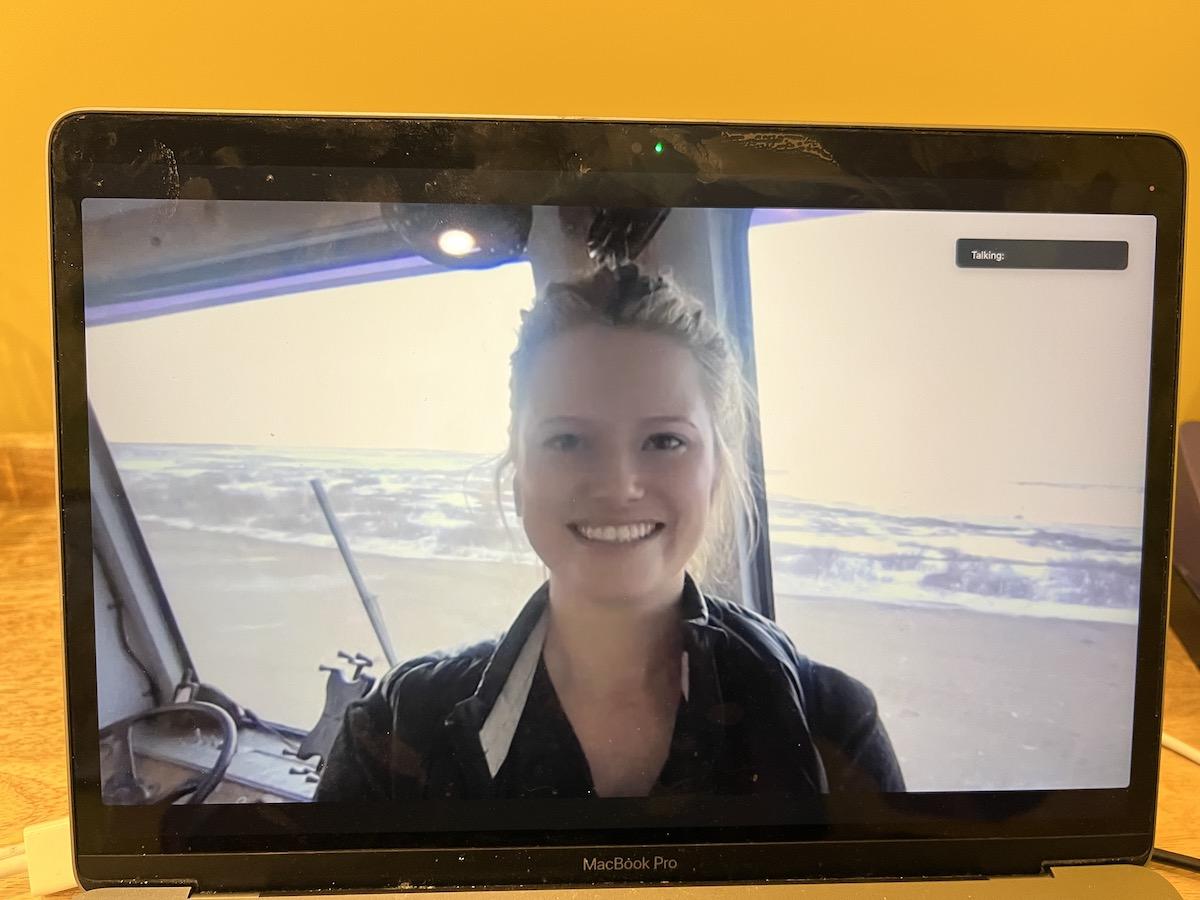
Polar Bears International staff scientist Alysa McCall speaks to National Parks Traveler from a Tundra Buggy near Churchill, Manitoba in advance of Polar Bear Week/Jennifer Bain
The area is seeing one more ice-free day a year on average over the last several decades. While healthy males who are good hunters may be able to cope with gradual changes, female bears are becoming smaller and having fewer cubs. The area is no longer famous for seeing polar bear triplets.
“We like to call these bears the fat, white, hairy canaries in the coal mine," said McCall, "because they are telling us that as the sea ice changes, so do the polar bears.”
The live cameras are a collaboration between Polar Bears International (PBI), Parks Canada, Churchill Northern Studies Centre, explore.org (the world's largest live nature network) and Frontiers North Adventures (a sustainable tourism leader).
PBI — the only non-profit organization dedicated solely to wild polar bears and Arctic sea ice — hosts Polar Bear Week to celebrate the Arctic, educate people about polar bears and their melting ecosystem, and inspire people to get involved in sustaining their future.
The Western Hudson Bay polar bear subpopulation — one of 19 global populations — numbers around 800 to 900, down from 1,200 in the 1980s. On land, the bears’ fat reserves are strained, and while on land they lose about 2 kilograms (4.4 pounds) per day of body weight.
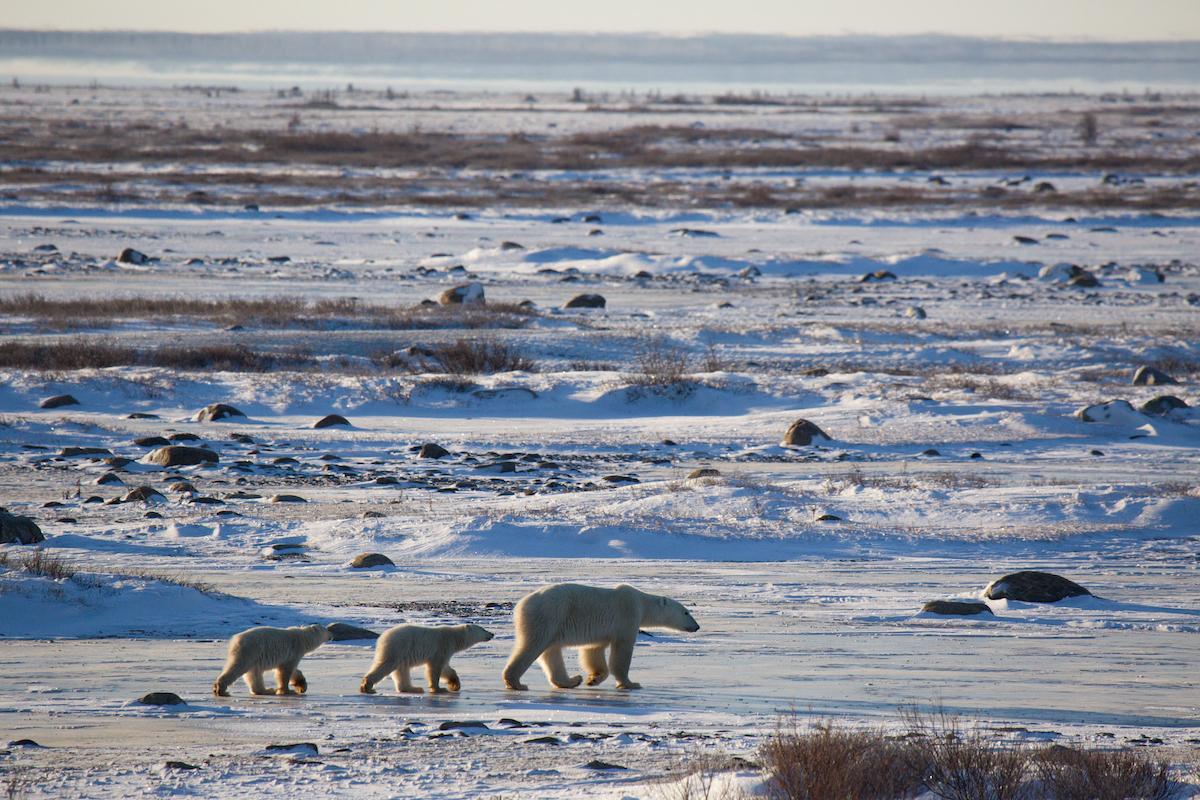
The Churchill area used to be famous for polar bear triplets, but now that isn't as common/Kt Miller, Polar Bears International
Polar Bear Week stresses that by reducing greenhouse gas emissions — shifting away from burning fossil fuels and switching to renewable energy sources — people can slow climate change, in turn protecting polar bears and planet.
PBI will host a series of experts through its Tundra Connections live chat series from Churchill and from COP27 in Egypt. A major focus this year is on coexistence solutions for polar bears and people.
Polar Bear Week “is just an extra excuse to celebrate the bears,” said McCall. PBI works year-round, but this is its biggest annual event and shows off a remote part of Canada that is known for its polar bears, beluga whales and northern lights. “It’s hard to get here, it’s expensive and a lot of Canadians will never even get to be here, so we’re trying to just show them the area.”
The live-streaming cameras offer a window into the polar bear’s world, potentially offering close-up views of moms snuggling with cubs, large males sparring and young bears testing the ice along the shore. Other wildlife usually make appearances, including caribou, grizzly bears, wolves, Arctic foxes, snowy owls, ptarmigan and Arctic hares.
People can tune into "Tundra Connections" webcasts to chat with polar bear scientists and experts. The series is aimed at teachers and students and is supported by free learning materials.
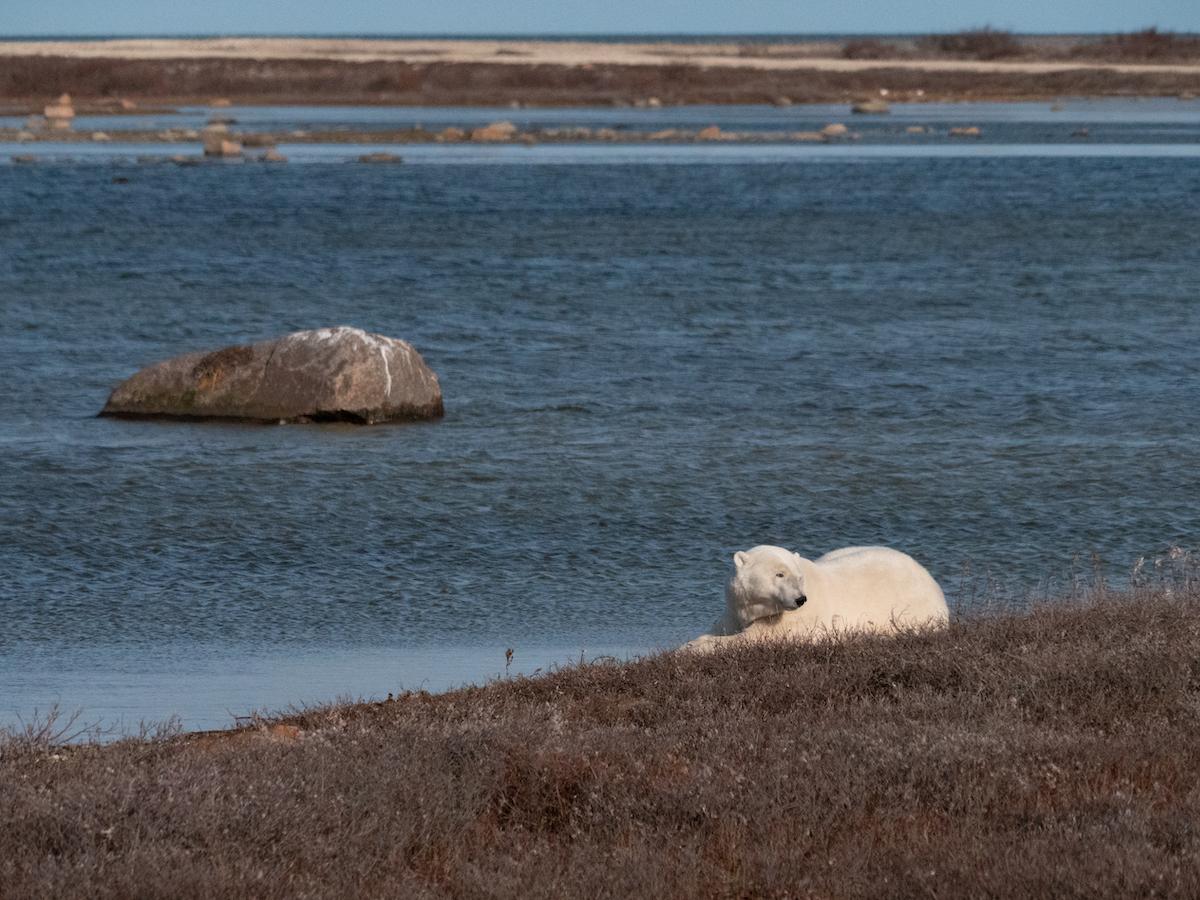
Polar bears congregate on the shore of Hudson Bay every fall waiting for the sea ice to freeze so they can hunt seals/Kt Miller, Polar Bears International
Viewers will learn about “Protect and Detect Polar Bears” bear-dar development. PBI continues to test and train the “SpotterRF” artificial intelligence radar system to detect bears and alert the community, along with other “Detect and Protect” ground-based radar systems to assess their potential in alerting authorities if polar bears approach the town. If successful, these systems could help reduce human-polar bear conflict. PBI mounted one radar unit on a new mobile tower that will be tested in corridors known to be frequent paths traveled by polar bears near Churchill. The team will test two other bear-dar systems during bear season, from Hensoldt and from Brigham Young University.
PBI continues testing around prototype temporary stick-on tracking tags developed with research scientists at 3M. Known as the Burr on Fur project, the goal is to create a minimally invasive way of tracking wildlife. PBI continues to work with their Arctic Ambassador Center network to test them on bears in captivity at participating zoos.
Polar Bear Week is just ahead of the COP27 United Nations Climate Change Conference in Sharm El Sheik, Egypt, where global leaders will discuss reducing global emissions and other efforts to slow climate change.
The cameras in Wapusk National Park are mounted to Cape Churchill Tower — a fire tower used by polar bear researchers in the 1970s — and live stream year-round. The other cams are seasonal.
McCall said these are the best-studied polar bears in the world and more than four decades of data has been gathered. These were the first bears that showed a link between declining sea ice and changes in polar bear bodies.
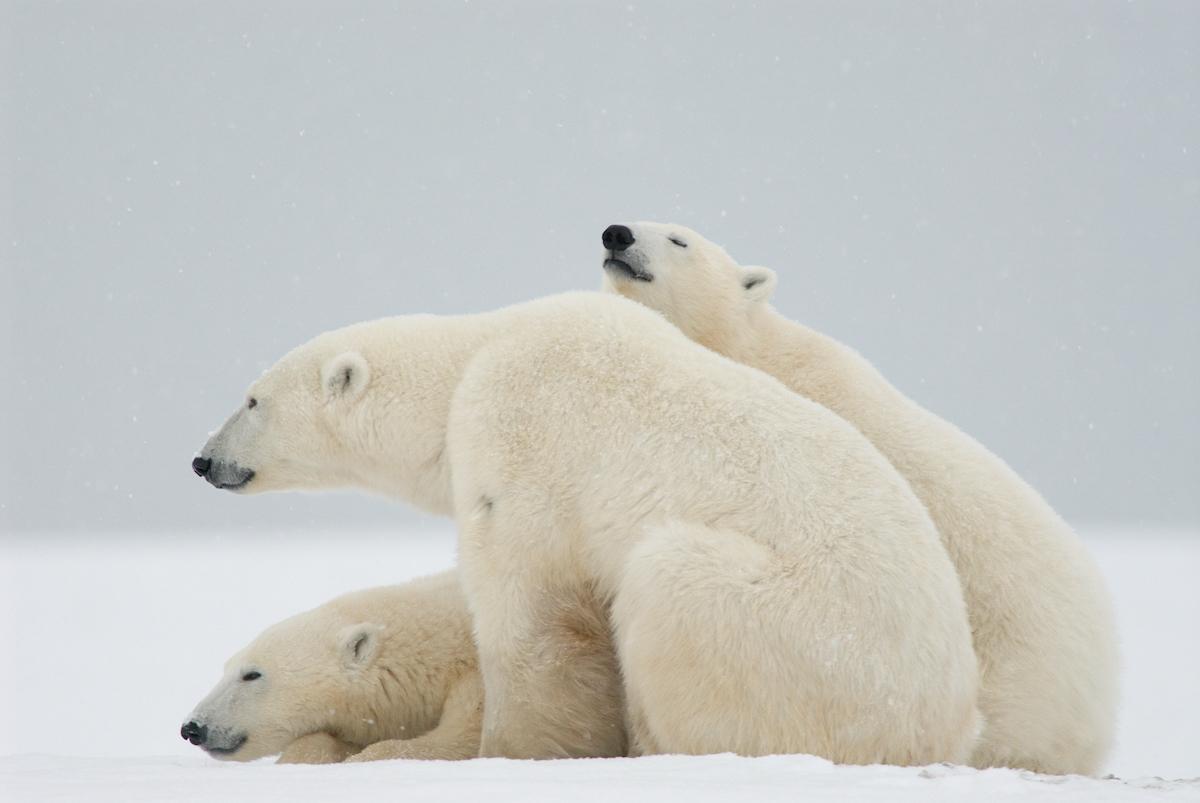
Polar Bear Week aims to inspire people to love polar bears and fight climate change to protect the sea ice they depend on for hunting/BJ Kirschhoffer, Polar Bears International
“These bears, on average, have spent about one extra day on land per year for the last 40 years,” said McCall. “Every year is a little different. That’s not a steady linear progression. There are some good ice years, some poor ice years. How the ice is very much impacts the polar bear bodies. The more ice available, the more time for them to hunt. So this is not a population of starving, emaciated bears by any stretch. That’s not how things kind of work here. What happens is this long progression over time. As these bears have spent a little more time on land, they’re a little more nutritionally stressed than they used to be.”
Females typically go up to eight months without eating. They mate in the spring, need to eat a ton of food to get fat enough to come on to land in the summer, den in the fall, give birth, lactate and emerge from their dens the following spring.
Spring is the biggest eating time, when seal pups are just six to eight weeks old, “nice and fat and juicy but still really stupid” so polar bears “just vacuum them up,” McCall said. While the timing of the fall freeze up is important, the timing of break up (historically July but sometimes June here) is even more critical.
When people watch the cams during Polar Bear Week, they are likely to see healthy, happy bears because the sea ice hasn’t yet changed that much in this area. “We don’t want people to feel doom and gloom about it,” said McCall. “Our main goal is hope. We know we can keep polar bears in the Arctic.”



Add comment